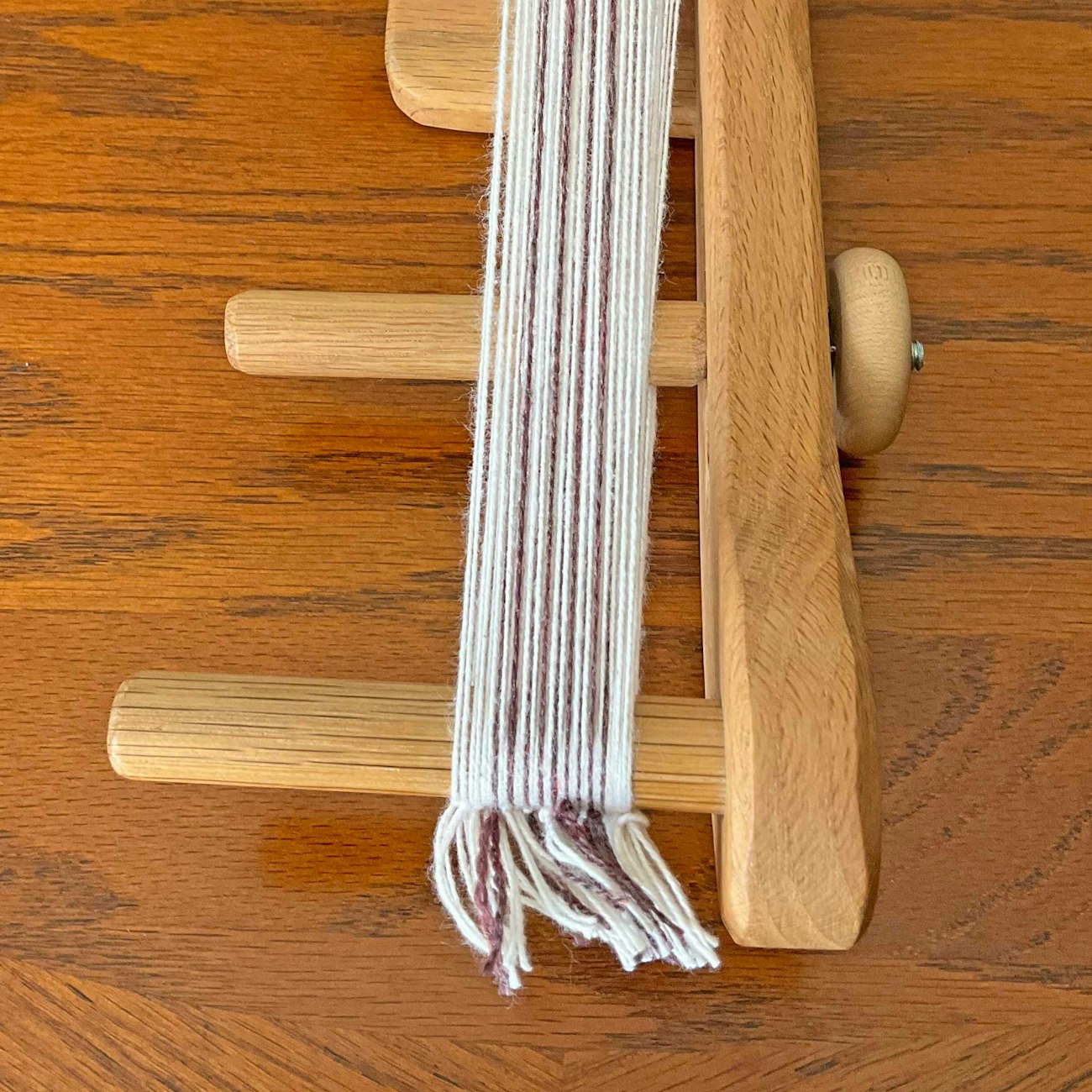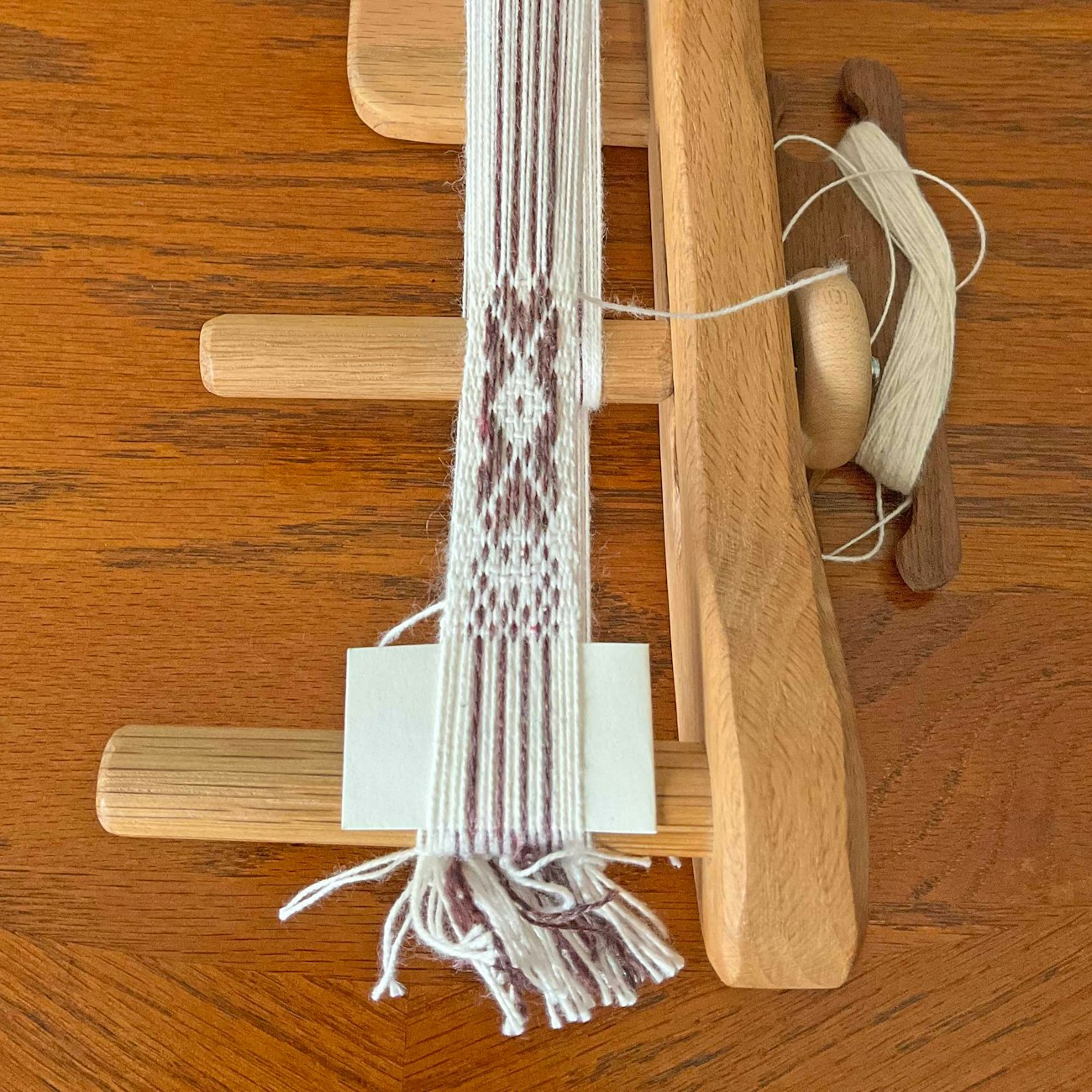One of the things I enjoy most about being part of Long Thread Media is the talented group of people I work with. There are beaders, weavers, knitters, spinners, embroiderers—the list goes on, and I get to learn from all of them. You can, too, through our video library. Angela Schneider is the project editor for all of our publications at Long Thread, and her wonderful video Baltic Pick-Up on the Inkle Loom is the newest course to be added. As a spinner and weaver myself, here are a few things I learned from Angela to improve my very basic level of skills.
Consider Contrast
Initially, when I would select a background color for my piece, I would choose black. Considering the color of the handspun I was going to use for the patterning, the contrast was usually not enough for it to show. It was also very hard to see to pick up the threads. As I learned in Angela’s video, making sure there is enough difference between the background and motif threads will make the design shine. Not only is color contrast important, this is an instance where the size of the thread matters as well. On my second round, shown below, I was curious to see if my handspun was large enough in size compared to the 8/2 cotton background threads.
 Using threads that have enough contrast both in color and thickness will make it easier to see the threads when weaving. Photo by Katrina King
Using threads that have enough contrast both in color and thickness will make it easier to see the threads when weaving. Photo by Katrina King
Save those Samples
In becoming a member of the Spin Off team, I have learned many things about spinning beyond throwing fiber at a spindle or wheel. One of the most valuable lessons I’ve learned has been about sampling. I used to become distraught at sacrificing part of my handspun yarn, even to measure grist. Now, since I’m used to sampling different fibers and methods, I have small amounts of yarn everywhere. Using these samples in bands like this will preserve the spinning and create something beautiful, and the bands don’t take a ton of yarn to make.
 Katrina’s pattern is starting to take shape! Photo by Katrina King
Katrina’s pattern is starting to take shape! Photo by Katrina King
Tactile Recognition
Have you ever noticed that the more you pay attention to something, the worse it gets? The same was happening with my selvedges. Trying to watch with my eyes and gauge how tight to pull the weft created all kinds of bumps and wiggles. Instead, I trusted my hands to tell where the fiber was. The concept of “muscle memory” is a misnomer; muscles are levers and do not create networks—neurons do. Every time you practice a skill, the neural pathways used in that practice grow a little more. The process can be thought of in the same way as the development of a roadway or trail. The more people who travel over it, the more ingrained it becomes in the earth. In weaving the band, I used the same pair of fingers on each side when I pulled the weft tight to the selvedge. My fingers told my brain when the thread was in the right place, and the edges became straight. One of Angela’s tips from the snippet below also teaches weavers how to measure bands for consistency.
Angela’s new video, Baltic Pick-Up on the Inkle Loom, is chock-full of tips and tricks for weaving Baltic pick-up. As a beginning bandweaver myself, watching the video helped me understand how to weave patterns into my bands, and I am so happy with how this particular band, with my added handspun, is turning out. In the bonus video below, Angela shares even more tips for bandweavers of all skill levels.
Katrina King is the assistant editor of PieceWork, an avid crafter, and a continuing student of craft and life.

